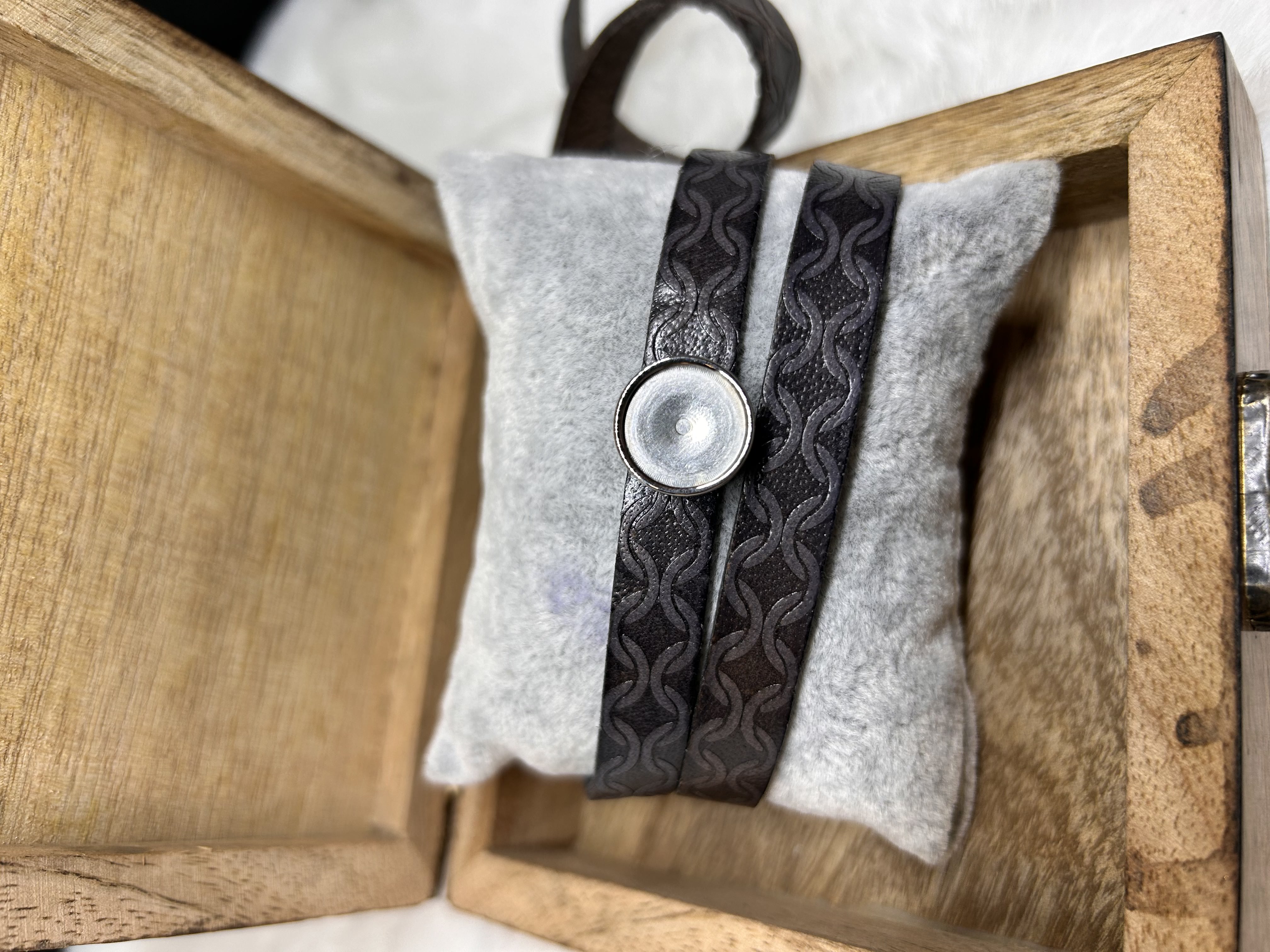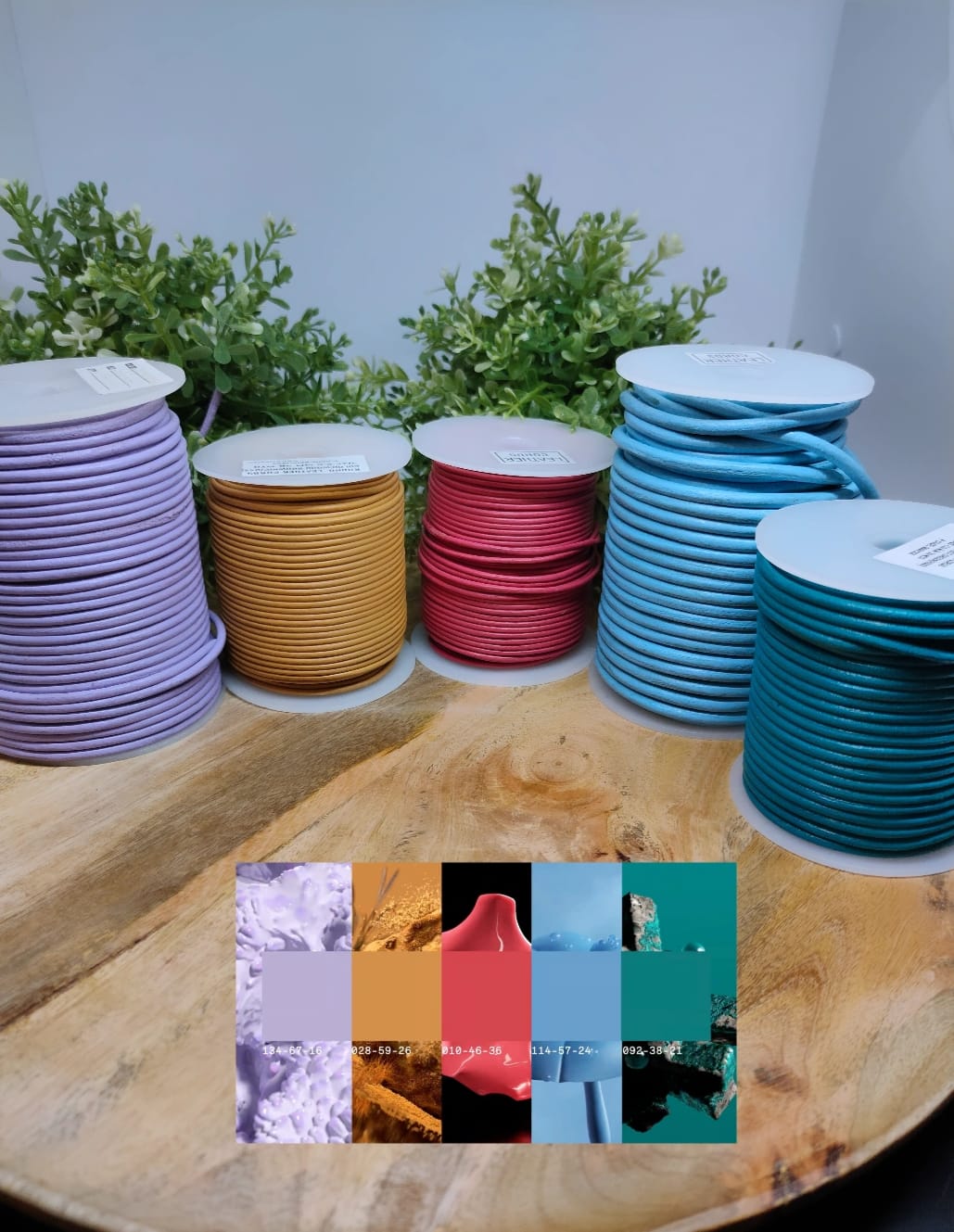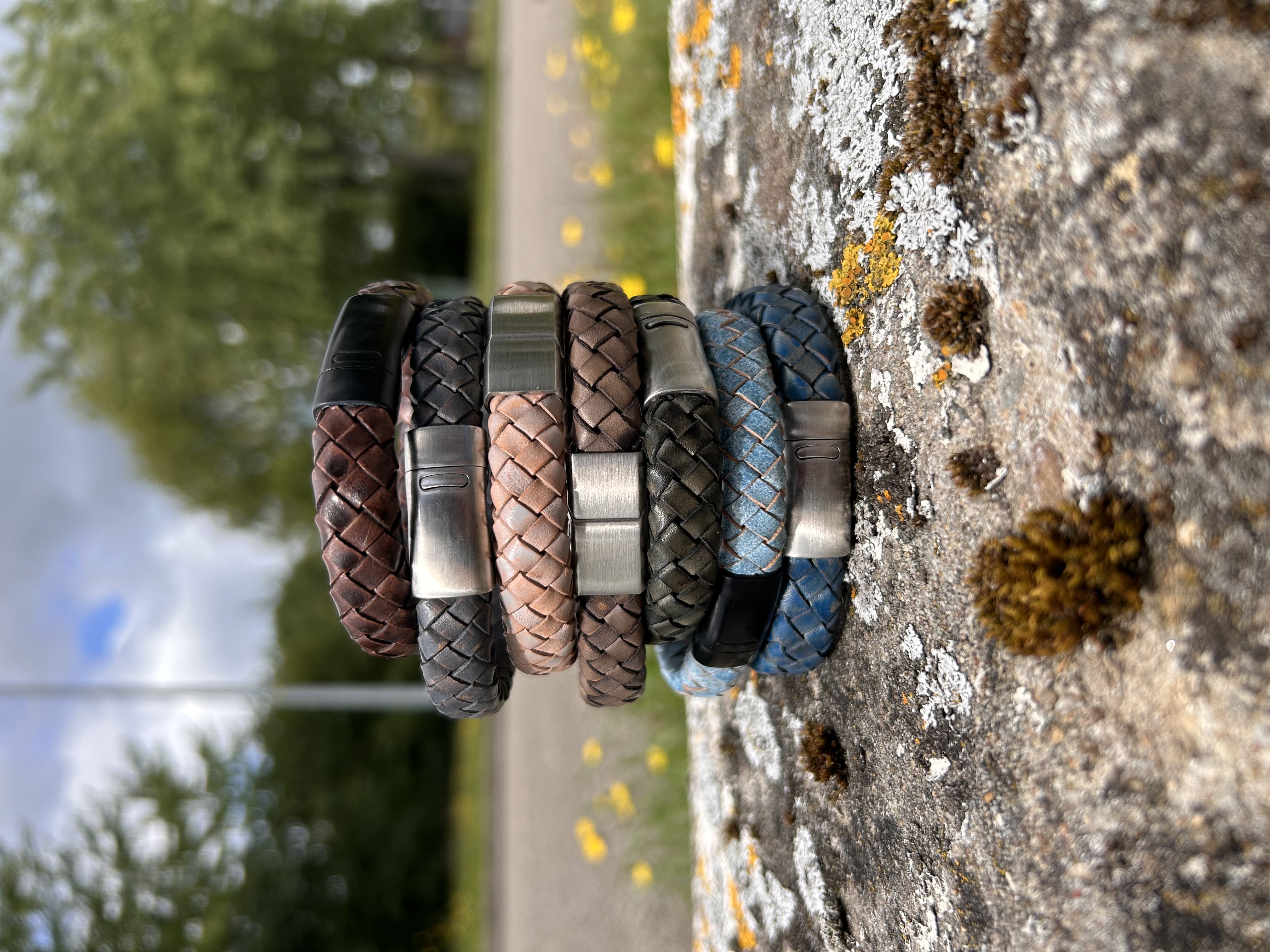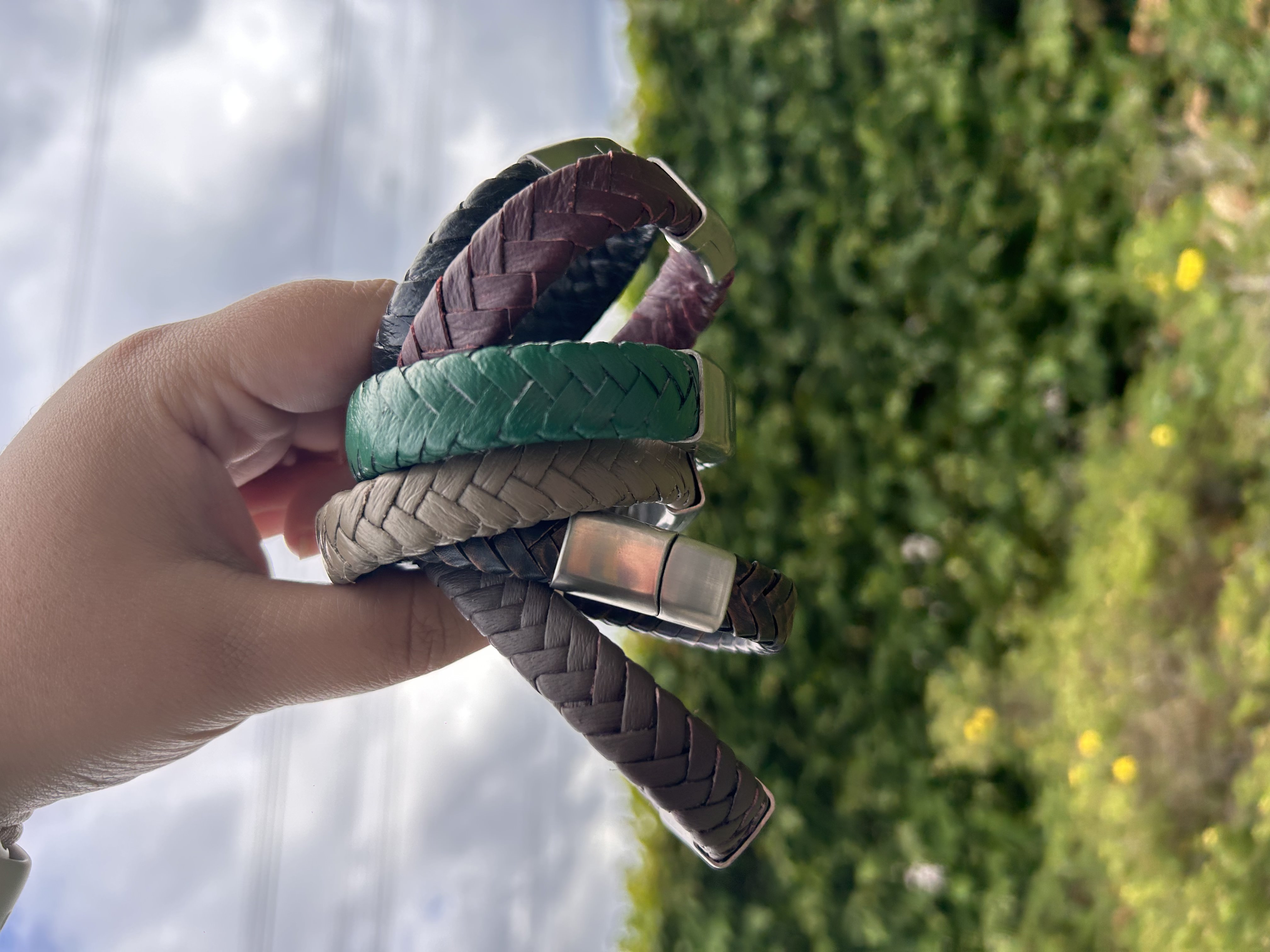Introduction
From the luxurious sheen of an impeccably crafted Italian leather purse to the hardy expanse of a meticulously braided equestrian line, the timeless appeal of this material reverberates through fashion trends and centuries-old traditions. But what truly captivates us about leather cords, and where does its illustrious journey begin? Delving deep into the realms of craftsmanship and industry, we embark on a captivating exploration of the intricate process of leather manufacturing: an extraordinary nexus of rich heritage, unparalleled artistry, and cutting-edge technological innovation. Join us as we unveil the captivating story behind this coveted material, steeped in history and woven with the threads of time itself.
Why Understanding the Process Matters
As a leathercraft artisan, jewelry manufacturer, or designer in the fashion accessory domain, anchoring your work in the intricate processes of leather production can provide a wealth of benefits. By immersing yourself in the world of leather, from the initial stages of sourcing rawhide to the meticulous refining process, you gain a deeper appreciation for the artistry involved in creating exquisite leather products. Understanding each stage of transformation, from selecting the finest quality raw materials to skillfully crafting and marketing your creations, empowers you with invaluable knowledge. It allows you to make informed choices, ensuring that your products not only showcase exceptional craftsmanship but also align with eco-friendly practices. This attention to detail and commitment to ethical sourcing become the pillars of your brand, setting you apart from the competition. Delving into the heart of leather production opens up pathways to differentiation. By embracing the intricacies of the craft, you have the opportunity to create unique designs that tell a captivating story. This detailed understanding serves as a catalyst for innovation, inspiring you to push the boundaries of creativity and create truly remarkable pieces that resonate with your target audience. In a world where consumers are increasingly conscious of sustainability and ethical practices, your comprehensive knowledge of leather production allows you to offer products that stand as testaments to both craftsmanship and ethical sourcing. Each item you create becomes an embodiment of your dedication to quality, authenticity, and responsible manufacturing. By embracing the journey of leather production, you embark on a creative adventure that not only enriches your work but also establishes your brand as a symbol of excellence. So, dive into the world of leather, embrace its rich history and traditions, and let it fuel your passion for creating extraordinary fashion accessories that leave a lasting impression.
The Journey of Leather Production: From Farm to Fashion
The fascinating process of leather production owes its origins to the raw materials that come before it. This crucial stage in the journey not only directly connects to environmental impact, sustainability, and animal welfare but also holds immense importance for designers and brands seeking to create an authentic narrative that resonates with the growing segment of conscious consumers. By weaving these considerations into your design philosophy and brand story, you can add layers of depth and authenticity to your creations. Consumers today are increasingly mindful of the origins of the products they choose, making it essential for designers and brands to embrace transparency and showcase their commitment to sustainability and ethical practices. From the farms where animals are raised to the intricate processes of tanning and crafting, every step in the leather production journey holds its own significance and contributes to the final product. Understanding and appreciating this journey not only adds value to the end result but also helps foster a deeper connection between consumers and the products they choose. So, next time you admire a beautifully crafted leather item, take a moment to reflect on the intricate journey it undertook from farm to fashion. Embrace the story behind the material and its impact on the environment, animal welfare, and the conscious choices of consumers.
A Look at the Raw Materials
Leather begins its journey with animal skins, sourced from various animals such as cattle, sheep, and goats. Each animal offers a distinct set of properties, handling characteristics, and potential applications in the world of leather crafting. For instance, bovine hides, obtained from cattle, are renowned for their durability and thickness. Due to their robust nature, bovine hides are often preferred for crafting sturdy, structured goods such as belts, boots, and saddles. The thickness of bovine hides provides excellent support and longevity, making them ideal for items that require resilience and strength. On the other hand, goat and sheepskins offer a different set of qualities that cater to softer, more delicate products. Goat leather, known for its supple texture and lightweight feel, is prized for its flexibility and ability to mold to the contours of the body. This makes goat leather a popular choice for crafting gloves, garments, and accessories where comfort and dexterity are paramount. Similarly, sheepskins, renowned for their fine grain and softness, are often chosen for creating luxurious apparel, such as jackets, coats, and handbags. The inherent softness and pliability of sheepskin make it a favored material for items that require a touch of elegance and sophistication. Beyond cattle, sheep, and goats, leather can also be sourced from a variety of other animals, each offering unique characteristics and applications. Exotic leathers, derived from animals such as crocodiles, snakes, and ostriches, possess distinctive textures and patterns that add a touch of luxury and exoticism to leather goods. However, the sourcing and use of exotic leathers raise ethical and sustainability considerations, prompting conscientious consumers and craftsmen to seek out alternatives that prioritize animal welfare and environmental stewardship.
The Tanning Process and Its Significance
At the heart of the leather-making process lies tanning, a transformative step that turns raw animal hides into durable, pliable leather. This crucial stage marks the transition from a stiff, perishable material to one that is supple, resilient, and resistant to decay. Tanning is a chemical process, a complex dance of organic chemistry that harnesses the power of tannins to imbue rawhide with the desirable properties of leather. These tannins, traditionally extracted from plants, can also be sourced in mineral form or synthesized through modern chemical compounds. The significance of the tanning process cannot be overstated. It not only preserves animal hides but also enhances their utility and value, making them suitable for a wide range of applications in fashion, upholstery, and industrial goods. By chemically bonding with the collagen fibers in the rawhide, tannins effectively stabilize the structure of the leather, preventing it from decomposing while imparting desirable characteristics such as flexibility, strength, and resistance to moisture. One of the oldest and most traditional methods of tanning is vegetable tanning, which utilizes tannins extracted from plant sources such as oak, chestnut, and quebracho trees. This time-honored technique results in leathers that are rich in natural color, with a characteristic earthy aroma and a supple yet firm texture. Vegetable-tanned leather is prized for its sustainability and biodegradability, as well as its ability to develop a unique patina over time, reflecting the life and experiences of its owner. In contrast, chromium tanning, introduced in the early 20th century, relies on chromium salts to tan the rawhide. This method offers several advantages over vegetable tanning, including faster processing times, greater uniformity in color and texture, and enhanced resistance to heat and water. However, chromium tanning has come under scrutiny for its environmental impact, as the use and disposal of chromium compounds can pose risks to human health and the ecosystem if not managed properly. In addition to vegetable and chromium tanning, there are various other tanning methods and techniques employed in the leather industry, each with its own unique set of characteristics and applications. From aldehyde tanning to synthetic tanning agents, the diversity of tanning processes reflects the ongoing quest for innovation and sustainability in leather production.
The Industrial Process: A Symphony of Steps
In the realm of industrial-scale leather manufacturing, the tanning process serves as just the opening act in a meticulously orchestrated symphony of steps. Modern leather production involves a carefully choreographed sequence of operations, each playing a crucial role in shaping the material's final form and function. From dyeing and softening to finishing and embossing, each stage is executed with precision and efficiency to ensure the highest quality standards are met. Once the hides have been tanned to perfection, they are ready to undergo further processing at the hands of advanced machinery and technologies. Large-scale tanneries, equipped with state-of-the-art facilities, take on the task of transforming raw leather into a diverse range of finished products destined for markets around the globe. These facilities are not only highly mechanized but also designed to maintain strict quality controls throughout the production process. The journey of industrial leather production continues with dyeing, a critical step that imbues the leather with color and character. Precision dyeing equipment ensures uniform color penetration, allowing manufacturers to achieve a vast spectrum of hues and shades to suit every design preference. Softening follows, where the leather undergoes treatments to enhance its suppleness and hand-feel, making it more pliable and comfortable for use in various applications. In the pursuit of perfection, leather may also undergo splitting to achieve specific thicknesses, ensuring consistency and uniformity across the finished products. Embossing and buffing techniques add textural elements, creating visual interest and enhancing the tactile experience of the leather. Whether it's adding a subtle grain pattern or imparting a high-gloss sheen, these finishing touches elevate the aesthetic appeal of the final product. At the heart of it all are the advanced machinery and technologies that drive the industrial leather production process forward. Automated cutting systems ensure precision and efficiency, minimizing waste and maximizing yield. Computer-controlled finishing processes allow for fine-tuning of the leather's surface characteristics, from smooth and sleek to textured and tactile. Meanwhile, innovative techniques such as laser engraving and digital printing open up endless possibilities for customization and creativity in leather design.
Nappa and Italian Leather Production: The Epitome of Craft
When it comes to luxury and quality in the world of leather, few terms evoke as much reverence as 'Nappa' and 'Italian leather.' These terms have become synonymous with precision, artistry, and a commitment to excellence. Understanding the meticulous processes behind these illustrious products not only offers insights into the craftsmanship involved but also sets a standard for the entire industry, elevating the art of leather production to new heights.
Nappa Leather: A Definition Beyond Luxury
Nappa leather, named after the Napa Valley in California where it was first tanned, represents the epitome of luxury and refinement. This type of leather is characterized by its full-grain, unsplit construction, which means it retains the entire thickness of the original hide. The unique tanning process Nappa leather undergoes enhances its natural qualities, resulting in a buttery texture, supple feel, and lustrous finish. It is prized for its unparalleled softness, durability, and ability to age gracefully over time. The versatility of Nappa leather is evident in its wide range of applications, from high-end automobile upholstery to premium handbags and luxurious apparel. Its use in these sectors speaks volumes about its reputation for comfort, elegance, and sophistication. Whether it's the plush interior of a luxury car or the sleek silhouette of a designer handbag, Nappa leather adds a touch of opulence and refinement to any product it adorns.
The Craft of Italian Leather Production
Italy has long been revered as a global hub for leather production, thanks to its rich tradition of artisanship and attention to detail. From the rolling hills of Tuscany to the bustling workshops of Florence, every step of the Italian leather-making process is a testament to the country's dedication to excellence. Italian leather production is steeped in tradition, with techniques and methods passed down through generations of skilled artisans. One of the hallmarks of Italian leathercraft is the use of vegetable tanning, a labor-intensive process that relies on natural tannins extracted from tree bark and other plant sources. This traditional method not only produces leathers of exceptional quality but also minimizes environmental impact, making it a sustainable choice for discerning consumers. In addition to traditional tanning methods, Italian leather artisans are known for their meticulous attention to detail in the finishing stages of production. Whether it's hand burnishing the edges of a leather wallet or embossing a distinctive pattern onto a designer handbag, every piece is crafted with precision and care. This commitment to craftsmanship has earned Italian leather a prestigious reputation in the fashion industry, where it is synonymous with luxury, style, and enduring quality.
The Art of Braided Leather: A Technique Beyond Time
Braided leather transcends mere material – it is a testament to the ingenuity and manual dexterity of artisans, weaving strands of leather into intricate patterns that form a unique woven fabric. From the classic three-strand braids to more complex designs, this age-old craft has captivated craftsmen and enthusiasts alike with its versatility and artistic expression. At its core, the braiding technique involves intertwining multiple strands of leather in a systematic manner to create a cohesive structure. This process requires precision, patience, and a keen eye for detail as craftsmen manipulate the strands to achieve the desired pattern and texture. The result is a visually striking and tactilely pleasing material that can take on endless forms, from simple yet elegant designs to elaborate and ornate patterns. One of the most common applications of braided leather is in the creation of belts, where the braided texture adds a touch of sophistication and style to the accessory. Braided leather belts are renowned for their durability and versatility, making them a timeless wardrobe staple for both men and women. Similarly, braided leather straps are often used in the construction of handbags, purses, and pouches, providing a sturdy yet fashionable accent to these accessories. In addition to functional items, braided leather also finds its way into the realm of fashion and design, where it serves as a decorative element in shoes, apparel, and jewelry. From braided leather sandals to intricately woven bracelets, the versatility of braided leather allows designers to incorporate this timeless technique into a wide range of products, adding texture, visual interest, and a touch of artisanal charm. What sets braided leather apart is not just its aesthetic appeal, but also the craftsmanship and skill required to master the technique. Each braid is a testament to the artisan's expertise, reflecting hours of meticulous work and attention to detail. Whether it's a simple braid or a complex pattern, the artistry of braided leather speaks to the rich tradition of craftsmanship and the enduring allure of handmade goods.
Conclusion
In conclusion, the knowledge of the leather manufacturing process is not just informative but essential for brand differentiation, leather cord product quality, and ethical narrative. As an artisan or industry professional, understanding these operations sets the foundation for an informed and innovative approach to creating the finest leather goods. The commitment to integrating sustainable practices and the preservation of traditional techniques ensures that the journey of leather – from farm to fashion – is one that upholds the values of excellence and responsibility. By embracing sustainable practices, such as using eco-friendly tanning methods and responsibly sourcing materials, leather manufacturers can reduce their environmental footprint while still producing high-quality products. Furthermore, the preservation of traditional techniques in leather manufacturing pays homage to the rich history and craftsmanship associated with this art form. By honoring and passing down these ancient techniques, artisans can create leather goods that embody the essence of the craft and showcase the skill and dedication of the masterful hands that shape them. As you traverse this intricate path, let this guide be the step towards a leathery success – one that is deeply rooted in the essence of the craft and the touch of the masterful hands that shape it. Let your passion for quality, sustainability, and tradition guide you towards creating exceptional leather goods that stand the test of time and resonate with discerning customers who appreciate the artistry and craftsmanship behind each piece.




